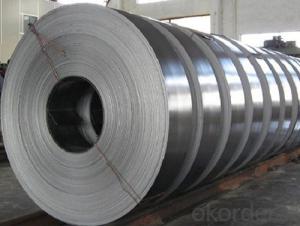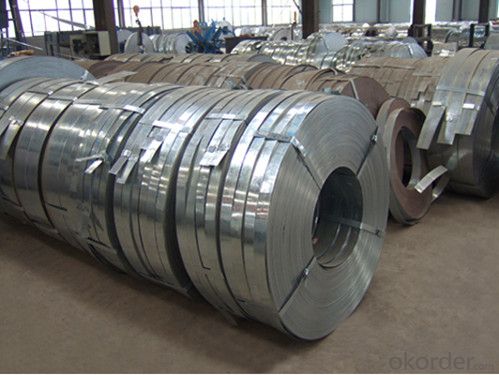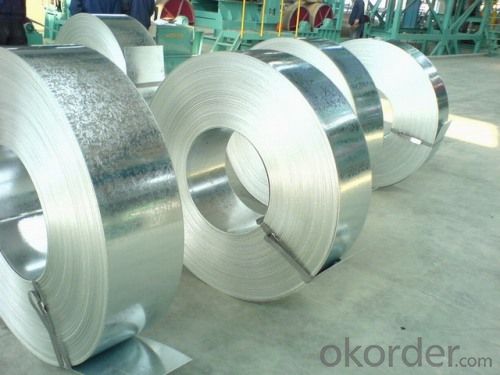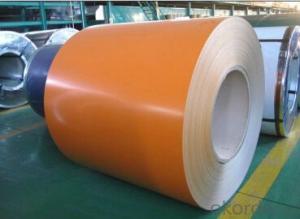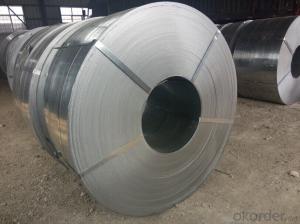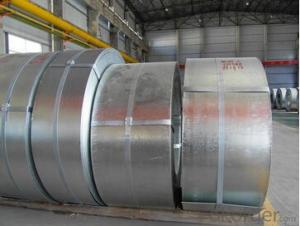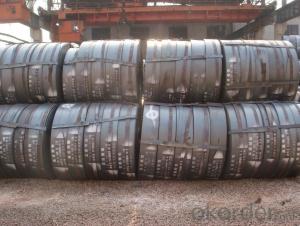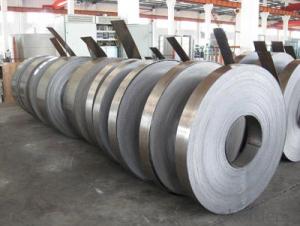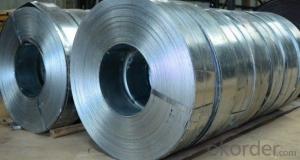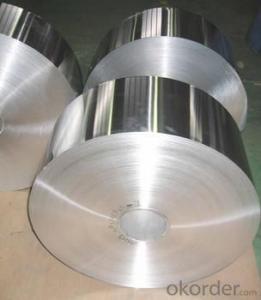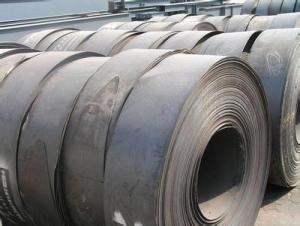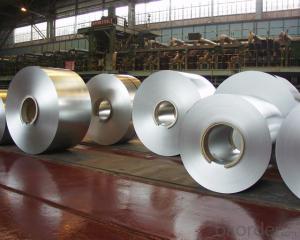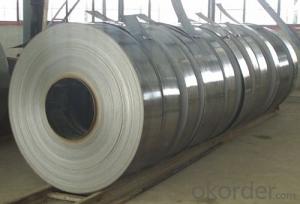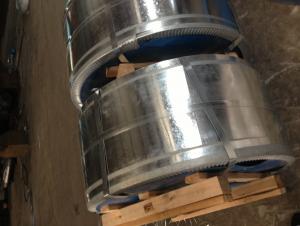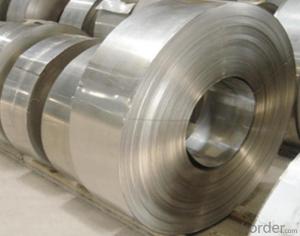Galvanized Steel Strip with High Quality-DX51D+Z 700*2.0mm
- Loading Port:
- China main port
- Payment Terms:
- TT OR LC
- Min Order Qty:
- 50 m.t
- Supply Capability:
- 10000 m.t/month
OKorder Service Pledge
OKorder Financial Service
You Might Also Like
Galvanized Steel Strip with High Quality-DX51D+Z 700*2.0mm
Product Description:
Specifications:
1. Thickness: 2.0mm
2. Width: 700mm
3. Material: DX51D+Z
4. ID: 508mm or 610mm
5. Spangle: Regular spangle or zero spangle
6. Surface treatment: chromated or no chromated; oiled or no oiled.
Advantages of Galvanized Steel Strip with High Quality-DX51D+Z 700*2.0mm:
1. Uniform coating;
2. Strong adhesion;
3. Strong corrosion resistant ability
Usage of Galvanized Steel Strip with High Quality-DX51D+Z 700*2.0mm:
1. Making pipes, like Greenhouse tubes, drinking water pipe, heating pipe, gas pipe and so on;
2. Used in automobile;
3. Used in construction;
4. Used in agriculture, fishery and so on.
FAQ of Galvanized Steel Strip with High Quality-DX51D+Z 700*2.0mm:
Q1: How soon can we receive the product after purchasement?
A1: Within three days of placing an order, we will begin production. The specific shipping date is dependent upon international and government factors, but is typically one month-two months.
Q2: How do you guarantee the quality of our products?
A2: We have established an advanced quality management system which conducts strict quality tests at every step, from raw materials to the final product. At the same time, we provide extensive follow-up service assurances as required.
Q3: The prices are invoicing on theoritical weight or on actual weight?
A3: We can do it in both manners, according to the customers' request.
Images of Galvanized Steel Strip with High Quality-DX51D+Z 700*2.0mm:

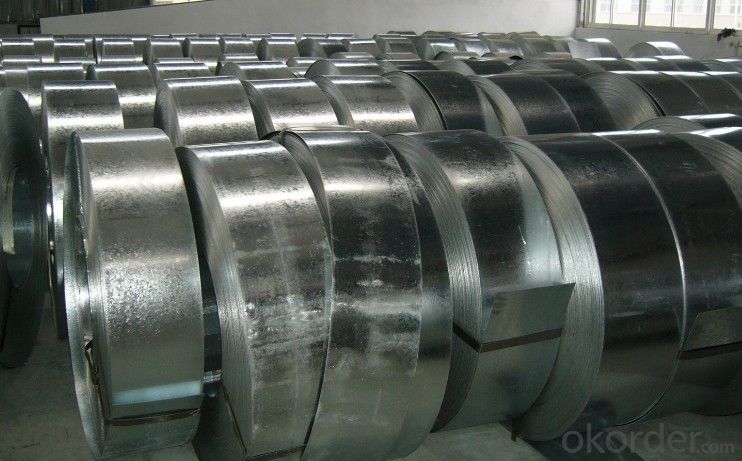
- Q: What are the different material compositions for steel strips?
- Some common material compositions for steel strips include carbon steel, stainless steel, alloy steel, and tool steel.
- Q: What are the challenges faced in the production of steel strips?
- The production of steel strips presents several challenges that need to be addressed. One major challenge revolves around the high energy consumption during the manufacturing process. The production of steel demands a significant amount of energy, encompassing both electricity and fuel. This poses not only a cost challenge but also an obstacle to environmental sustainability. Another obstacle lies in ensuring the quality control of the steel strips. It is crucial to maintain consistent and uniform thickness, width, and surface quality in order to produce high-quality steel strips. Any variation in these parameters can result in defects and inconsistencies in the final product. Achieving the desired mechanical properties of the steel strips also proves to be a challenge. The production process involves various heat treatments and mechanical processing, all of which must be meticulously controlled to attain the desired strength, hardness, and ductility of the steel. Deviating from the required properties can render the steel strips unsuitable for their intended applications. Moreover, the production of steel strips often involves the handling and processing of large and heavy coils. This logistical challenge necessitates specialized equipment and infrastructure to efficiently transport, store, and handle the steel strips. Lastly, the steel industry confronts the challenge of increasing competition and market demand. In order to remain competitive, steel manufacturers must continually enhance their production processes, reduce costs, and adapt to the changing demands of customers. This entails investing in research and development, as well as embracing new technologies and market trends. In conclusion, the production of steel strips is a complex process that requires overcoming challenges related to energy consumption, quality control, mechanical properties, logistics, and market demands. Nevertheless, through continuous innovation and improvement, these challenges can be tackled, resulting in the production of high-quality steel strips that fulfill the requirements of various industries.
- Q: Are steel strips suitable for the production of automotive exhaust systems?
- Yes, steel strips are suitable for the production of automotive exhaust systems. Steel strips offer excellent strength, durability, and resistance to high temperatures and corrosion, making them an ideal material choice for exhaust systems. Additionally, steel strips can be easily formed and welded, allowing for the customization and fabrication of complex exhaust system components.
- Q: How are steel strips used in automotive industry?
- Steel strips are widely used in the automotive industry for a variety of applications. One of the main uses of steel strips is in the manufacturing of car bodies and frames. These strips are often formed and welded together to create the structural components of a vehicle, providing strength and durability. Additionally, steel strips are used in the production of various automotive components such as suspension systems, exhaust systems, and engine parts. These strips can be shaped and manipulated to meet specific requirements and are known for their excellent mechanical properties, including high tensile strength and resistance to corrosion. Moreover, steel strips are used in the fabrication of automotive springs, which are vital for ensuring the smooth operation of vehicles. Springs made from steel strips provide the necessary support and stability, allowing the suspension system to absorb shocks and vibrations, thus improving overall driving comfort. Furthermore, steel strips are employed in the production of automotive fasteners, such as bolts, nuts, and screws, which are essential for holding various parts together. These fasteners need to be strong and reliable, and steel strips provide the necessary strength and integrity for secure connections. In summary, steel strips play a crucial role in the automotive industry, being used in the manufacturing of car bodies and frames, as well as various components such as suspension systems, exhaust systems, springs, and fasteners. Their exceptional mechanical properties make them an ideal material choice, ensuring safety, durability, and overall performance of vehicles.
- Q: Can steel strips be used in the production of automotive parts?
- Yes, steel strips can be used in the production of automotive parts. Steel strips are commonly used in the automotive industry for manufacturing various components such as brackets, reinforcements, frames, and panels. The high strength and durability of steel make it an ideal material for automotive applications, providing structural integrity and ensuring safety. Additionally, steel strips can be easily formed, welded, and manipulated to meet the specific requirements of different automotive parts.
- Q: How are steel strips tested for quality assurance?
- Steel strips are tested for quality assurance through various methods such as visual inspection, dimensional measurement, mechanical testing, and chemical analysis. Visual inspection checks for any surface defects or imperfections. Dimensional measurement ensures the strips meet required specifications in terms of thickness, width, and length. Mechanical testing involves assessing the strip's strength, ductility, and toughness through tension, compression, or impact tests. Chemical analysis determines the composition and purity of the steel, ensuring it meets the required standards. These comprehensive testing methods ensure the quality and reliability of steel strips for various applications.
- Q: How are steel strips protected during transportation?
- Steel strips are protected during transportation through various methods to ensure their safety and prevent any damage. One common method is the use of protective coatings or films. These coatings act as a barrier between the steel strips and their surroundings, shielding them from moisture, dust, and other contaminants that can potentially cause corrosion or scratches. Another way to protect steel strips during transportation is by using proper packaging materials. The strips are often wrapped in plastic or paper to provide an additional layer of protection. This helps to prevent any direct contact between the strips and other objects, reducing the risk of scratches or dents. Furthermore, steel strips are often secured using straps or bands to keep them in place during transit. These straps are tightened to ensure that the strips do not move or shift, minimizing the chances of any impact or collision that could lead to damage. In addition to these measures, steel strips may also be placed in sturdy containers or pallets to further protect them from external forces. These containers provide an extra layer of protection and help to distribute any weight or pressure evenly, reducing the risk of deformation or breakage. Overall, a combination of protective coatings, proper packaging, secure strapping, and the use of containers or pallets are commonly employed to safeguard steel strips during transportation. These measures help to ensure that the strips reach their destination in optimal condition, ready for their intended use.
- Q: How are steel strips used in the manufacturing of electrical components?
- Due to their various properties and benefits, steel strips find common usage in the manufacturing of electrical components. Typically crafted from high-quality steel alloys, these strips are cut into desired shapes and sizes to cater to specific applications. One of the primary applications of steel strips in electrical component manufacturing involves the creation of magnetic cores. These cores are essential elements in transformers, inductors, and other electrical devices that require efficient energy transfer. The steel strips are meticulously stacked and laminated to minimize eddy currents and enhance magnetic performance. This lamination structure aids in reducing energy losses and improving the overall efficiency of the electrical component. Furthermore, steel strips often serve as a solid and stable base or support material for electrical contacts and connectors. These components necessitate a firm foundation to ensure proper electrical conductivity and secure connections. Steel strips offer excellent mechanical strength and stability, making them an ideal choice for such applications. In addition, steel strips can be employed for shielding purposes in electrical components. The interference caused by electromagnetic waves (EMI) can negatively impact the performance of sensitive electronic devices. By incorporating steel strips into the design, manufacturers can create an effective barrier against EMI, safeguarding the electrical component from external interference and ensuring its proper functioning. Moreover, steel strips are also utilized in the manufacturing of electrical springs and contacts. These components demand specific mechanical properties, including high tensile strength, resilience, and durability. Steel strips possess these attributes and can be easily molded into the desired shape, making them well-suited for applications that require repetitive motion or reliable electrical connections. In conclusion, steel strips play a crucial role in the manufacturing of electrical components. They are utilized for creating magnetic cores, providing a stable foundation for contacts and connectors, shielding against electromagnetic interference, and producing springs and contacts with desired mechanical properties. With their versatility and reliability, steel strips significantly contribute to the overall performance and efficiency of electrical devices.
- Q: What is strip steel?
- A steel strip, also called a strip, is actually a thin, narrow and long steel plate, usually rolled.
- Q: How are steel strips used in the manufacturing of bicycles?
- Steel strips are commonly used in the manufacturing of bicycles to form the frames, forks, and various components of the bicycle. These strips are shaped, welded, and assembled to create a strong and rigid structure that provides stability and support. Additionally, steel strips are also used in the production of bicycle accessories such as fenders, racks, and baskets.
Send your message to us
Galvanized Steel Strip with High Quality-DX51D+Z 700*2.0mm
- Loading Port:
- China main port
- Payment Terms:
- TT OR LC
- Min Order Qty:
- 50 m.t
- Supply Capability:
- 10000 m.t/month
OKorder Service Pledge
OKorder Financial Service
Similar products
Hot products
Hot Searches
Related keywords
